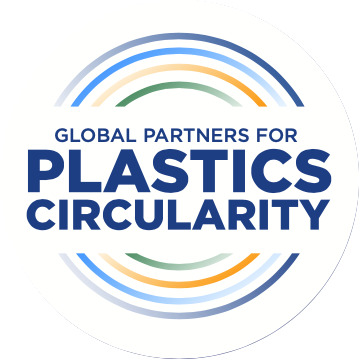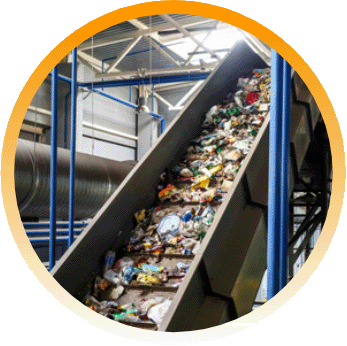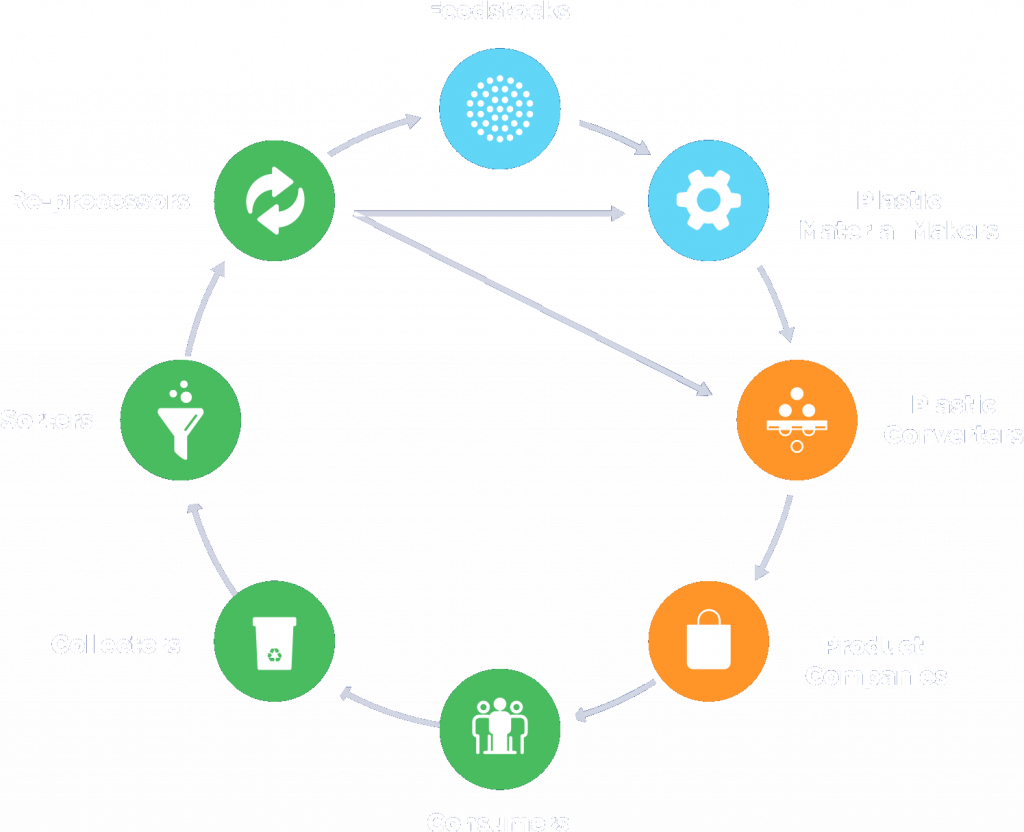
DESIGNING FOR CIRCULARITY
A global agreement can foster the use of plastic products and packaging that are designed to be reused and remade into new products. This helps eliminate plastic waste and conserves our natural resources.

Circularity = using plastics (or any resource) more efficiently by
- Keeping the resource in use for as long as possible
- Recovering the material or product at the end of its useful life
- Remaking the recovered material into new products
- And when possible repeating this over and over
In other words, we keep the molecules in play longer. This gives plastic products and packaging a circular life, greatly reducing the chance of the material becoming refuse and helping keep plastic waste out of our environment.
We all want less waste. Circularity can help achieve that.
There are multiple steps that can accelerate our drive toward circularity.
- Choosing materials with a lighter environmental footprint (often lightweight, efficient plastics)
- Rethinking how products/packaging are made, designed and used
- Designing products/packaging that can be used for a long time, reused and/or easily recycled
- Capturing materials at the end of their useful life to keep them out of our environment
- And using mechanical and chemical recycling to remake these materials into new products/packaging, which helps conserve natural resources and supports alternative feedstocks to fossil resources
To achieve circularity, we must design for it. Some examples:

Reuse
Example: Spray pump bottles for liquid laundry spot cleaners can be refilled from larger (recyclable) bottles and reused repeatedly instead of once.

Rethink
While single-use food and drink items provide sanitation and safety benefits, certain venues may lend themselves to reusable alternatives that produce less waste.

Redesign
Examples: Some office furniture and cell phones have been redesigned to make component replacement and recycling easier. And removing some colors or materials from plastic packaging and products that are incompatible with recycling systems can increase the value of the collected plastics improving the economies and incentives to recycle.

Recover and (re)sort
The ability to recover used plastics from the waste stream and (re)sort them into discreet streams of valuable materials will significantly expand the types and amount of plastic that can be recycled.

Reclaim and recondition
Encourage systems that reclaim used materials for new use, such as automobile parts recovery.

Recycle
Innovative technologies can reprocess more of the plastics that cannot be recycled today, enabling more of today’s products and packaging to become circular.
Designing products and packaging for circularity increases the value of used plastic. This incentivizes collection of more used plastics by recyclers and the informal sector. Companies around the globe are (re)designing products for circularity — see examples at plasticscircularity.org/our-progress.

A global agreement can help.
A well-crafted global agreement can accelerate the collaboration between plastic material makers, plastic converters, product companies & retailers and re-processors – collaboration that is needed to design for circularity. And it would provide clarity to countries on policies that contribute to circularity.
The Players in the Plastics Recycling Chain
To recycle plastics, an interwoven chain of players must work in concert. The plastic recycling chain can be viewed as a circle in which each player in turn enables another player. This infographic depicts that circle.


While all players are essential to complete the recycling chain, these four players in particular must collaborate to design products and packaging that are reusable and recyclable.
A global agreement should include:

Global product design principles based on life-cycle assessments that can lead to increased recycling and (where possible) reuse, plus national action plans that include country-specific “design-for-recycling” criteria.

National action plans requiring creation of waste management systems that enable circularity, appropriate to each country’s situation. The agreement could provide guidance/toolkits to support governments’ development of the action plan.

Public policy with circularity targets at the national level (such as recycled content requirements in packaging), based on minimizing resource utilization and maximizing recovered plastics as feedstock for new products. Smart policy can support investment in recycling infrastructure by creating demand for recycled plastics.

Guidance on maximizing the volume of plastics that can be mechanically recycled, plus guidance on the role of chemical/emerging recycling technologies in expanding circularity
Circularity is important for our future. It’s an innovative, sustainable way of making things that leads to a cleaner, healthier future.
A global agreement can foster the use of plastic products and packaging that are designed to be reused and remade into new products and packaging. This helps eliminate plastic waste and conserve our natural resources.
Championing a global agreement for a sustainable, circular economy.
FOR MORE INFORMATION VISIT PLASTICSCIRCULARITY.ORG
